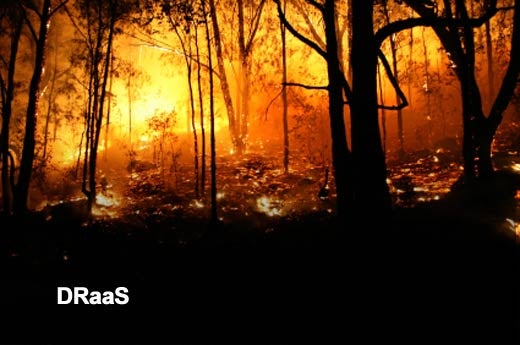The data protection industry saw its fair share of trends in 2013, from disaster recovery as a service (DRaaS) to the increased adoption of cloud backup. As virtual and cloud offerings become more mainstream, companies are becoming more aggressive in how they purchase and leverage them. As such, “the customer” will very much influence the data protection trends we see emerge in the year ahead. Here are five data protection trends for 2014, as identified by backup and recovery provider Unitrends.

Click through for five data protections trends for 2014, as identified by Unitrends.

Prediction No. 1: The evolution of disaster recovery as a service will take center stage.
Disaster recovery as a service (DRaaS) was a major trend in 2013, and, in 2014, we’ll see this phenomenon evolve in several ways:
- DRaaS services will evolve to become faster and even more efficient with virtualization technologies to optimize infrastructure server and storage needs and meet customers’ recovery point objectives (RPOs), recovery time objectives (RTOs) and service-level agreements (SLAs).
- DRaaS will also become more self-service oriented to give more control to midmarket customers, as well as additional flexibility to drive their disaster recovery practices.
Demand for the integration of local on-premise backup solutions with cloud-based archiving and recovery will increase. Companies will continue to increase their virtual footprint, as well as their desire to back up locally to ensure the most secure and rapid backup and recovery possible. Thus, we will see a growing trend of harmonizing local on-premise backup solutions with cloud-based archiving and recovery. As a result, cloud archiving to customers’ choice of backup sites (AWS, Google, OpenStack-based storage clouds and Rackspace) will emerge. Additionally, the combination of cloud-based archiving and DRaaS will allow virtualization spin up in the cloud to ensure the reliability of data and systems being recovered.

Prediction No. 2: The hybrid cloud will rise in importance as customers get more demanding around RPOs, RTOs and SLAs.
While many companies are adopting pure cloud storage and cloud backup to reduce costs and scale quickly, they often fail to consider how this model will impact recovery performance. One of the biggest underlying problems associated with pure cloud storage and cloud backup (pure denoting the sole use of the cloud without any on-premise mechanisms) is its performance and latency. With pure cloud storage and cloud backup, it could take weeks or months for a company to access their data if a disaster strikes.
A hybrid cloud model – where cloud storage and cloud backup are paired with an on-premise backup appliance – is the best way to expedite data recovery and meet demanding RPOs, RTOs and SLAs while ensuring data recovery from an offsite presence. Local backups of critical customer data, servers and systems are performed much faster than backups to the cloud, as are restore times. By pairing an on-premise backup appliance with a cloud-based disaster recovery solution, customers will always have the opportunity to see and manage a copy of their critical assets in a remote location. This hybrid model ensures company data in the cloud and information on the onsite physical appliance are constantly replicated and synched so companies can rapidly recover onsite or from the cloud whenever the need arises.

Prediction No. 3: Customers will look for solutions that support an expanded selection of cloud providers.
There has been tremendous growth in software as a service (SaaS) and infrastructure as a service (IaaS) offerings by various cloud services providers, opening up new opportunities for customers to manage all their IT needs. As customers select myriad cloud services, one such opportunity is ensuring flexible backup and disaster recovery services. Having an “open” cloud-based backup and disaster recovery service for the most popular cloud services will be a key trend in 2014. Vendors who can easily integrate with or provide flexible cloud-based DRaaS services will surpass the competition and have a leading edge in a crowded marketplace.

Prediction No. 4: Customers will demand a new way to purchase backup and recovery technology.
IDC predicts storage will grow by 50 times within the next 10 years. Research has shown that IT staffing is projected to grow by only 0.5 times over that same timeframe. IT departments need to learn how to do more with less, and companies who are using multiple backup and recovery solutions to protect data across their physical, virtual and cloud infrastructures will turn to all-in-one data protection solutions that protect information across heterogeneous environments. As a result, the Purpose Built Backup Appliance (PBBA), an all-in-one backup and recovery solution that customers can plug in and trust to protect rapidly expanding volumes of data across heterogeneous environments, will continue to be in high demand.
In addition to changes around what solutions companies buy, there will also be an evolution in how they purchase. Companies want to purchase technology the way they purchase consumer goods on the Internet. They want to conduct their own online research, and when they’re ready to make a purchase, they want simple pricing and a purchasing process that results in quick time to value. They do not want to be bombarded with outbound campaigns, cold calls and sales pitches.
In 2014, data protection vendors will adapt their sales models to accommodate the way customers want to purchase. Vendors that focus on inbound requests, holding meaningful conversations with prospects and making sure companies are buying through a channel in which they feel comfortable, will have the most success.

Prediction No. 5: Customers will begin to revolt against poor customer support.
Many technology companies view customer support as a cost center that can be transformed into a consulting engagement by holding customers’ feet to the fire when they need help the most. Companies that employ call centers that “give the appearance of” providing customer service without actually delivering on it seems to be the industry norm. In 2014, customers will rise against this unacceptable practice.
No matter how effective a technology is, the people behind it are a company’s most powerful asset. Customer support can be a huge competitive differentiator in a crowded market, and companies that make it the foundation upon which everything else is built will rise above the competition. The customer experience should drive everything a company does – from the way its products are engineered to its go-to-market strategy to its support strategy. In short, customers should be delighted at every turn throughout their respective lifecycle.














